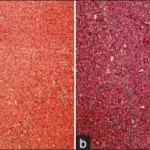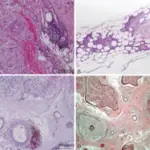Hypoparathyroidism is low parathyroid hormone. This may cause hypocalcemia, hyperphosphatemia, and increased neuromuscular irritability. Patients may present with myalgias, muscle spasms, and tetany.
Causes of hypoparathyroidism include:
- Iatrogenic (surgery, thyroid surgery) related hypoparathyroidism
- Autoimmune related hypoparathyroidism
- Genetic related hypoparathyroidism
What are the Signs Associated with Hypoparathyroidism?
The signs associated with hypoparathyroidism include:
- Chovstek sign
- Trousseau sign
What is the Chovstek Sign?
Chvostek sign is facial twitching.
What is the Trousseau Sign?
The Trousseau sign is observed in patients with low calcium which shows hand and forearm spasms after a blood pressure cuff is used.
What is Pseudohypoparathyroidism?
Pseudohypoparathyroidism is a group of rare endocrine disorders characterized by normal renal function and resistance to the action of parathyroid hormone.



